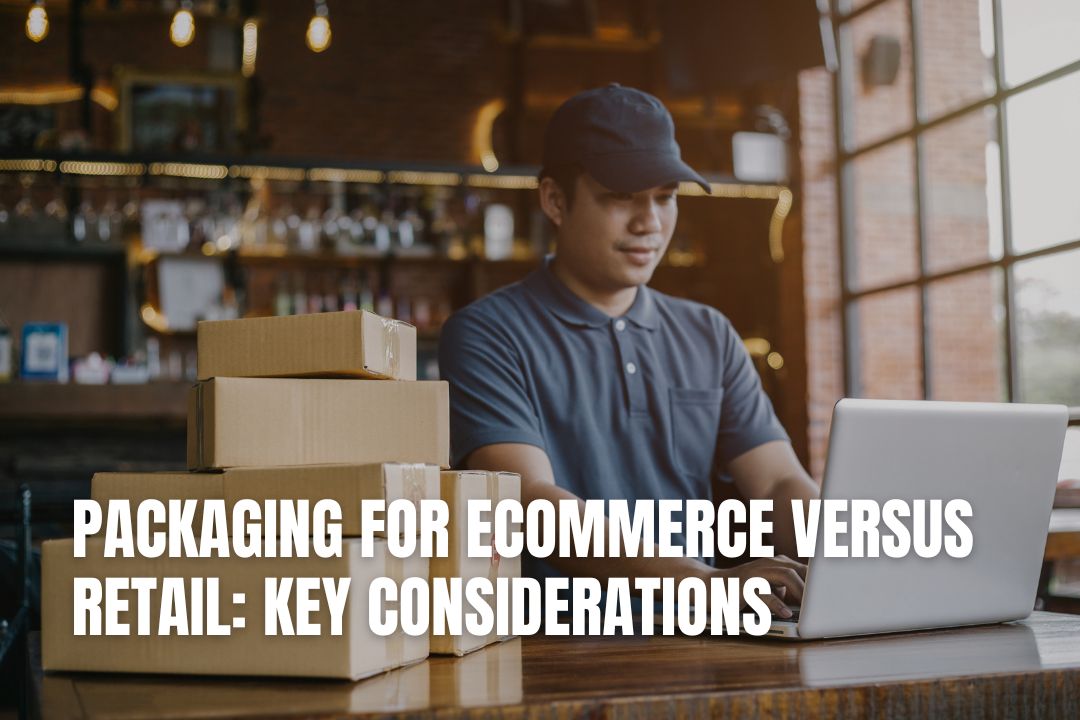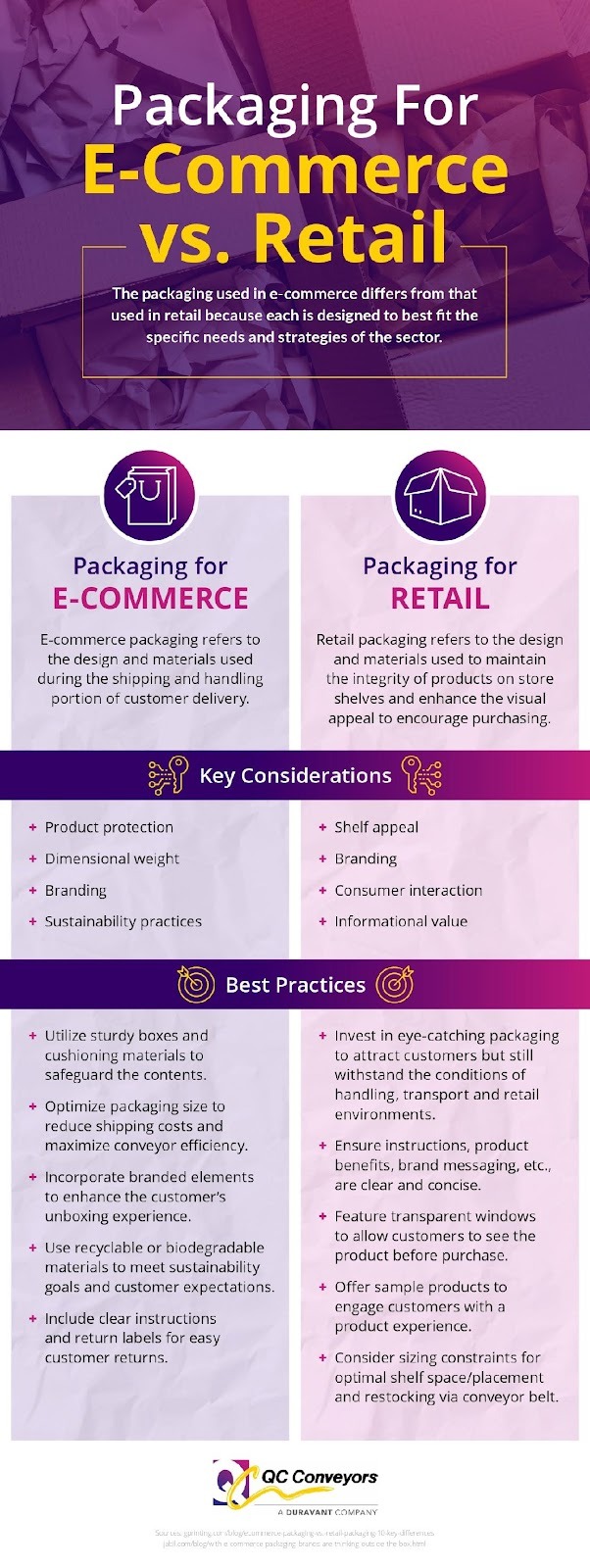
Packaging serves multiple purposes. It protects the product, communicates brand identity, and influences the customer experience. While retail and ecommerce packaging share these goals, their design priorities differ significantly due to the nature of the distribution channels and how customers interact with products.

Retail packaging is intended to attract consumers in a physical environment. Shelf visibility, color, and typography are crucial. Customers often make purchase decisions within seconds, so packaging must convey product benefits quickly and clearly. Materials also play a role. Cardboard boxes, blister packs, and shrink-wrap are common, and they must maintain structural integrity while allowing products to be displayed effectively.
Another consideration is compliance with point-of-sale requirements. Packaging must fit standard shelving, be easy to stock, and support efficient inventory management. Retail packaging often uses secondary materials such as display trays or signage to enhance presentation and facilitate bulk merchandising.
Ecommerce packaging focuses on protecting products during shipping. Unlike retail, items travel through multiple handling points and encounter rougher conditions, including automated sorting and conveyor systems like the AS40 conveyor. Packaging must absorb shocks, prevent movement, and withstand stacking pressures. Corrugated boxes, protective inserts, and air cushions are commonly used to prevent damage during transit.
Sustainability is increasingly important in ecommerce packaging. Lightweight materials reduce shipping costs and carbon emissions. Minimalist designs and recyclable materials appeal to environmentally conscious consumers while lowering waste. Additionally, ecommerce packaging must accommodate returns efficiently, as customers frequently send products back, making durability and resealability critical factors.
Both retail and ecommerce packaging require a balance between functionality and branding. Retail packaging must attract attention, whereas ecommerce packaging must survive transportation. Companies are finding ways to create brand-consistent experiences for online customers. For example, unboxing experiences, custom inserts, and branded mailers enhance customer satisfaction and reinforce brand identity even outside a store environment.
Printing, labeling, and color choices should maintain consistency across both channels. Packaging that works well on shelves may require additional protection for shipping, while ecommerce packaging can be designed to reduce material use without compromising brand recognition.
Packaging also impacts operational efficiency. Retail packaging is often produced in large quantities for distribution centers and stores, requiring standardized sizing and automation-friendly designs. Ecommerce packaging must account for variable order sizes and product combinations, which may increase the complexity of fulfillment operations. Automated packing systems and conveyors can help streamline handling while minimizing product damage. Additionally, careful coordination between warehouse layout, inventory management, and packing workflows ensures that both retail and online orders move quickly, accurately, and safely from production to delivery, reducing delays and operational costs.
Businesses must consider the unique challenges of each channel while maintaining a cohesive brand identity. Thoughtful packaging design for retail and ecommerce enhances customer experience, reduces costs, and minimizes environmental impact. Investing in materials, automation, and design strategies that reflect the needs of both channels positions companies for long-term success. For more information on the differences in packaging, feel free to look over the accompanying infographic below.

The primary difference lies in their main purpose. Retail packaging is a sales tool, designed to stand out on a crowded shelf and attract buyers. Ecommerce packaging is a protective shell, engineered to safeguard the product through a complex shipping process and deliver a positive experience at your customer's doorstep.
Ecommerce shipments often require more packaging per item to ensure protection. By choosing lightweight, recyclable, or minimalist materials, you can reduce shipping costs, lower your carbon footprint, and appeal to a growing number of environmentally conscious consumers.
You can maintain a cohesive brand identity by using the same logos, colour schemes, and typography. For online orders, you can elevate the experience with custom-printed boxes, branded inserts, or thank you notes to make the unboxing feel as special as an in-store purchase. Some businesses work with experts like Beacon Inside to align their packaging strategies.
Sometimes, but it often requires adaptation. A product in retail packaging might need to be placed inside a separate, more durable shipping box for ecommerce. Designing packaging from the start that can function in both environments, perhaps with a protective sleeve for shipping, can be a cost-effective solution.